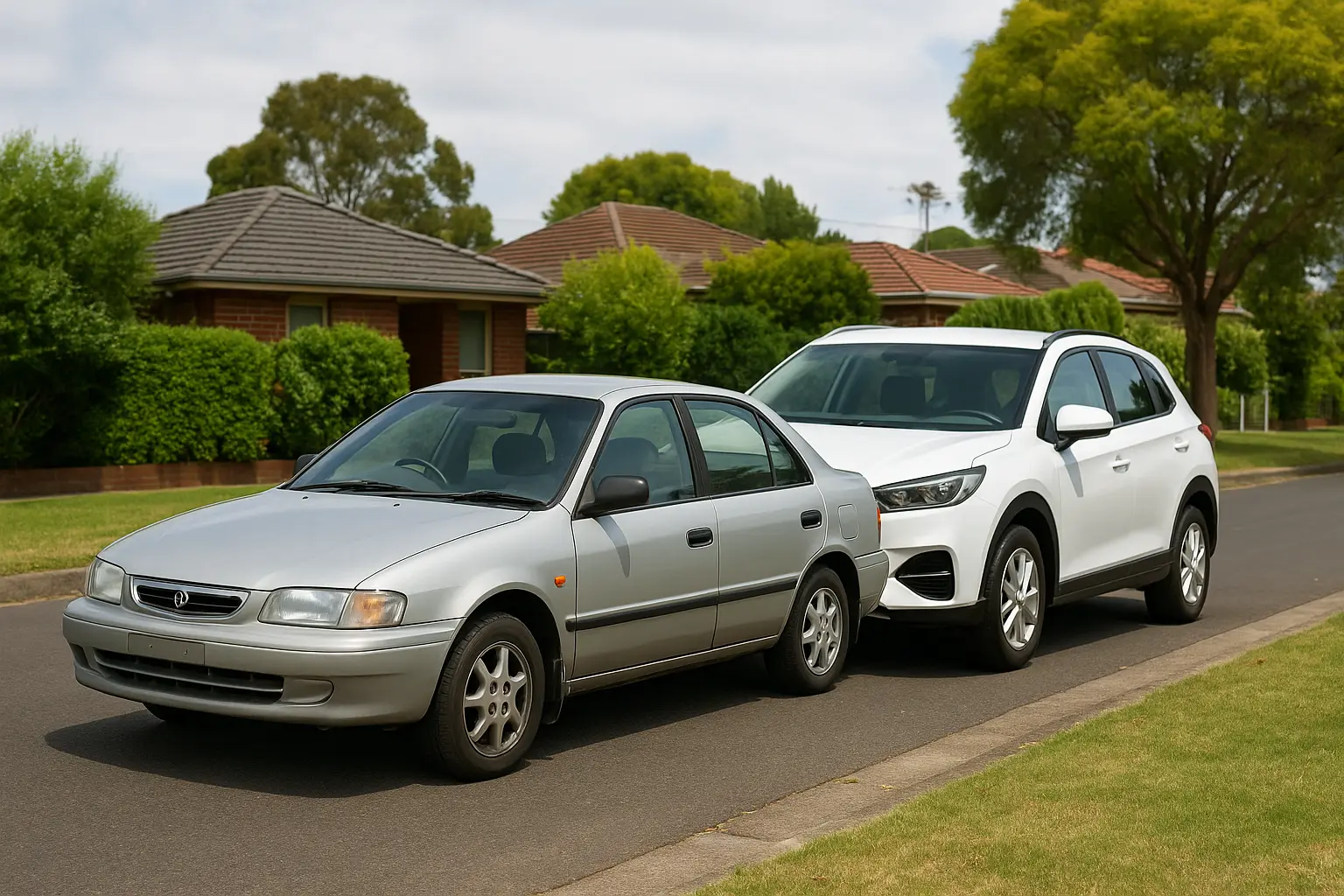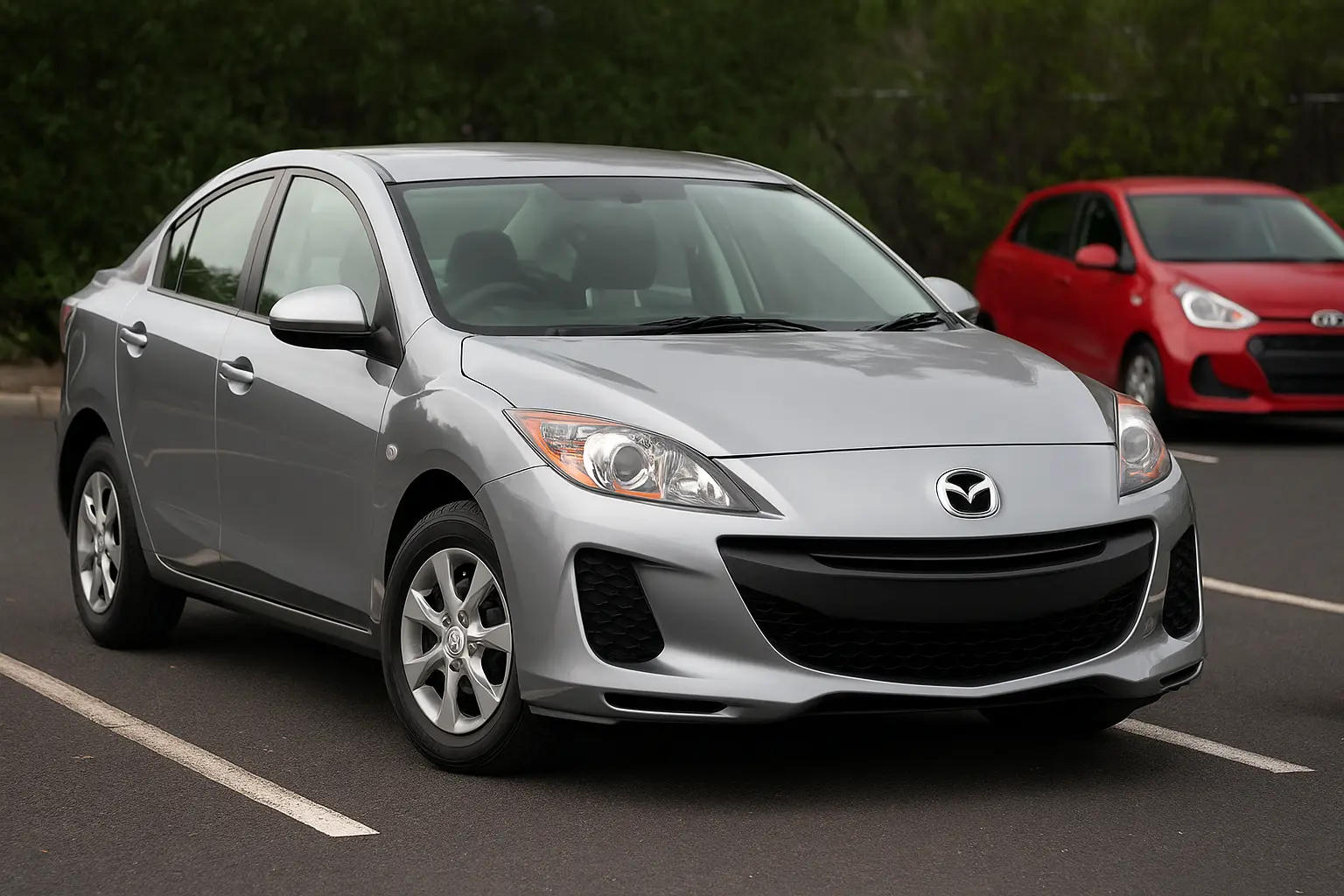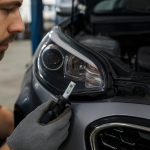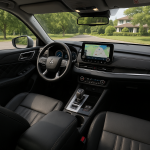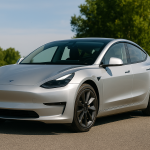Buying a new car is exciting, but it’s also one of the biggest financial commitments most Australians make. What many don’t fully consider is how quickly a car’s value drops — sometimes shockingly so — once it leaves the dealership. Understanding car depreciation isn’t just for accountants; it’s essential for anyone who wants to get the best value from their car over time.
In this comprehensive guide, we’ll break down what car depreciation means, how it’s calculated, what factors influence it, and — most importantly — how you can slow it down and protect your resale value.
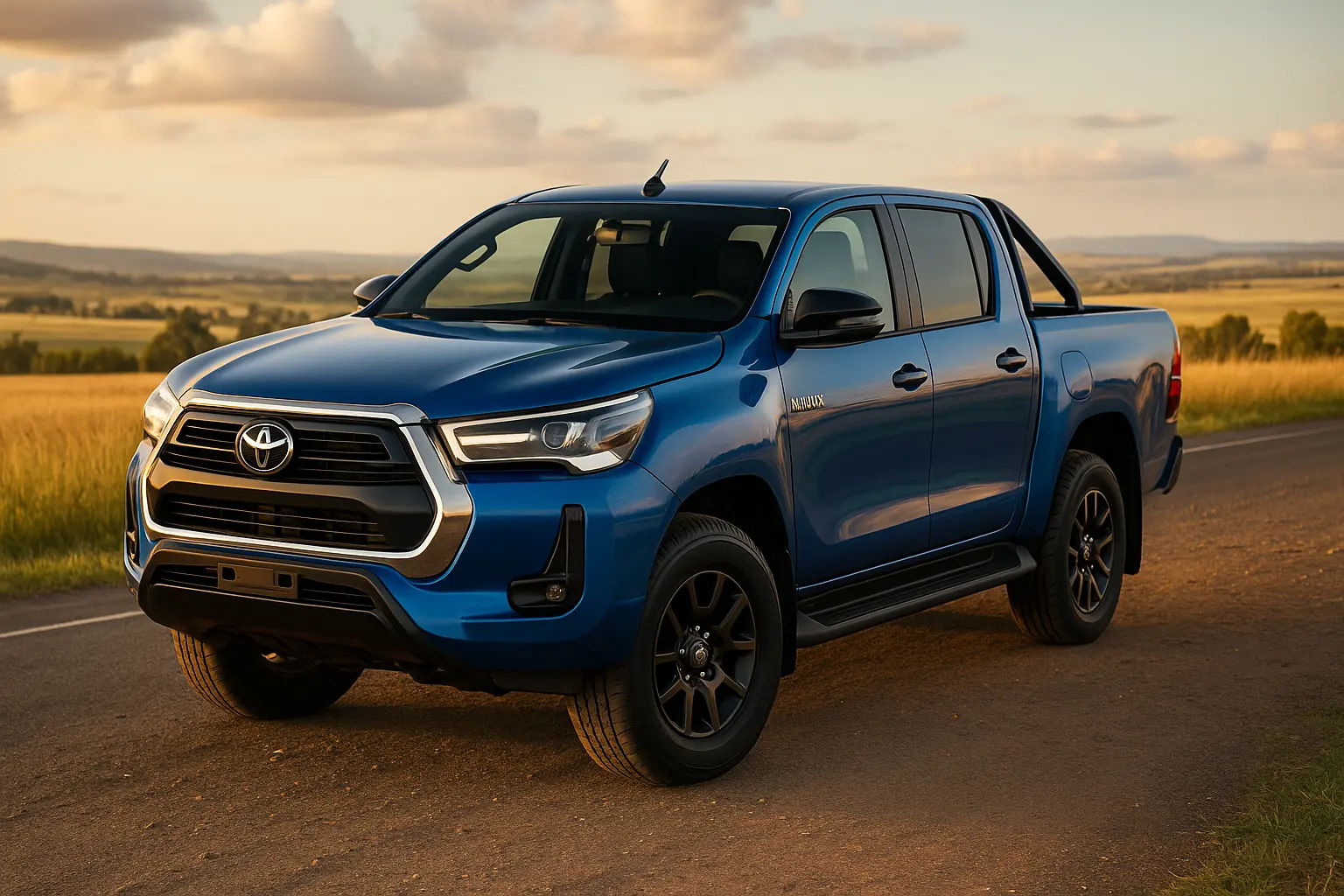
What Is Car Depreciation?
Car depreciation is the decline in value of your vehicle over time due to wear and tear, mileage, market trends, and age. Essentially, it’s the difference between what you paid for the car and what you could sell it for later.
In Australia, the average new car loses between 15% and 30% of its value in the first year alone. Over five years, it could lose up to 60% of its original value — depending on brand, model, and condition.
For example:
- A $50,000 new SUV might be worth only $35,000 after one year.
- After five years, it could be worth around $20,000–$25,000.
That’s a $25,000–$30,000 loss, often more than what people expect.
Why Does Depreciation Happen?
Cars depreciate because they are tangible assets that age and wear out. Unlike property, cars don’t appreciate over time. Here’s why depreciation occurs:
- Wear and tear: Every kilometre driven adds to mechanical and cosmetic wear.
- Technological obsolescence: Newer models often come with upgraded safety, infotainment, or fuel efficiency tech.
- Market demand: Trends shift — today’s popular SUV might lose appeal in a few years.
- Model updates: When a manufacturer releases a new generation, older models drop in desirability.
- Economic conditions: Fuel prices, inflation, and supply chain changes can all affect car values.
How Car Depreciation Works in Australia
Depreciation rates differ depending on:
- Make and model
- Vehicle type (SUV, hatchback, ute, EV, etc.)
- Market reputation
- Mileage and service history
In Australia, depreciation is also influenced by demand for specific body types and fuel efficiency. Utes and hybrids, for instance, tend to hold value better than sedans or luxury imports.
Typical Australian car depreciation curve:
- Year 1: 15%–30% drop
- Year 2–3: 10%–15% per year
- Year 4–5: 8%–10% per year
By the sixth year, depreciation slows significantly since most of the value has already been lost.
Factors That Affect Car Depreciation
Let’s break down the key factors that determine how fast your car’s value drops.
1. Brand Reputation
Brands known for reliability and longevity (Toyota, Mazda, Subaru) depreciate slower than those with high repair costs or poor resale reputation.
2. Mileage
The more you drive, the faster your car loses value. In Australia, the average annual mileage is around 15,000 km. Cars exceeding this tend to drop in value faster.
3. Condition
A clean, well-maintained car always sells for more. Dents, scratches, worn interiors, and missing service records can knock thousands off resale value.
4. Fuel Efficiency and Type
With rising fuel costs, fuel-efficient and hybrid cars tend to depreciate slower. Diesel vehicles once held value well, but as emissions standards tighten, they’ve started to lose ground.
5. Vehicle Popularity
Cars that are consistently in demand — such as the Toyota Hilux, Mazda CX-5, or Hyundai i30 — tend to have strong resale value because buyers trust them.
6. Colour and Trim
While it might sound trivial, colour affects resale. Neutral colours (white, silver, black) typically hold value better than bold colours (yellow, green, purple).
7. Ownership Costs
Cars with low servicing and repair costs tend to hold value better because buyers perceive them as cheaper to own long-term.
Depreciation and Different Vehicle Types
Not all vehicles depreciate equally. Here’s how depreciation affects various segments in the Australian market.
Hatchbacks
Small hatchbacks like the Toyota Corolla or Mazda3 depreciate moderately, mainly due to their popularity as reliable urban cars. However, as new hatchbacks become more tech-loaded, older models lose value quicker.
SUVs
The SUV market in Australia is booming, which keeps demand strong. Models like the RAV4, CX-5, and Kia Sportage retain solid resale value, especially hybrids and AWD variants.
Utes and 4x4s
Utility vehicles (like the Hilux and Ranger) are among the best performers in terms of resale. They’re versatile, durable, and in high demand for both personal and commercial use.
Electric Vehicles
EVs used to depreciate faster due to battery concerns, but this is changing. Brands like Tesla and BYD are improving resale strength as more Australians adopt EVs and charging infrastructure grows.
Luxury Cars
Premium European cars (BMW, Mercedes-Benz, Audi) often lose value faster than mainstream brands due to expensive maintenance and faster tech obsolescence.
How to Calculate Car Depreciation
The most common method is the straight-line depreciation formula:
Depreciation per year = (Cost of vehicle – Residual value) ÷ Years of ownership
For instance:
If your car costs $60,000 and is worth $20,000 after five years:
(60,000 – 20,000) ÷ 5 = $8,000 per year depreciation.
Online car depreciation calculators (from Australian automotive sites) can help you estimate this based on your make, model, and year.
How to Reduce Car Depreciation
While you can’t stop depreciation, there are ways to slow it down and maximise your car’s resale value.
Choose the Right Car
Select brands with a strong reputation for reliability and resale. Toyota, Subaru, Mazda, and Hyundai consistently rank high for retained value.
Maintain Regular Servicing
Stick to the manufacturer’s service schedule and keep detailed service records. Buyers pay more for cars with a complete service history.
Keep Mileage Reasonable
Avoid excessive long-distance driving. Low-mileage vehicles generally sell faster and for higher prices.
Protect the Exterior
Regularly wash, wax, and park in shaded areas to protect paintwork. Consider paint protection or ceramic coating for new cars.
Maintain the Interior
Avoid smoking, eating, or spilling liquids inside the car. A clean, odour-free interior adds thousands in resale value.
Avoid Aftermarket Modifications
Custom rims, tinted lights, and performance chips might appeal to you — but not to most buyers. Keep the car as stock as possible.
Choose Neutral Colours
Stick to timeless colours that appeal to more buyers when reselling.
Sell at the Right Time
Selling before a model refresh or when your car still has warranty coverage can help you command a better price.
Depreciation and Car Financing
If you buy a car using finance, it’s vital to understand how depreciation affects your loan. Many new car owners face negative equity, where the car’s market value drops below what’s owed on the loan.
Example:
You finance a $50,000 car. After one year, it’s worth $38,000 — but you still owe $44,000. That $6,000 gap is negative equity, which can become a financial burden if you sell early or the car is written off.
Tip:
Consider gap insurance, which covers the difference between your car’s depreciated value and what you owe the lender in case of total loss.
Tax and Business Depreciation in Australia
For business owners, depreciation works differently. The Australian Taxation Office (ATO) allows businesses to claim depreciation as a deduction under the car cost limit for work-related vehicles.
Small businesses can also use instant asset write-off schemes, which allow immediate deductions for vehicles under a certain price threshold. However, this applies to business use only and not personal cars.
Resale Timing: When Should You Sell?
Timing can make or break your resale value. Here’s what to consider:
- Sell before warranty expires – buyers trust cars with remaining coverage.
- Avoid selling just after a model update – older versions drop in value quickly.
- Consider market trends – for example, selling a petrol car before fuel price spikes or EV incentives change.
For most vehicles, the sweet spot for selling is between three to five years, when depreciation begins to slow but before major repairs are needed.
Depreciation and Leasing
Leasing can be a smart option for those who don’t want to deal with resale hassles. In lease agreements, depreciation is effectively factored into your monthly payments. When the lease ends, you return the car and avoid worrying about its resale value.
However, leasing isn’t always cheaper long-term — it depends on your driving habits and how often you prefer a new car.
Cars That Hold Value Best in Australia
According to market data from Australian used car platforms, here are vehicles known for strong resale performance:
- Toyota Hilux – unmatched reliability and popularity
- Mazda CX-5 – consistent demand in the SUV segment
- Subaru Outback – solid reputation among families and off-roaders
- Kia Cerato – excellent value retention for a budget car
- Tesla Model 3 – growing resale strength with EV adoption
Cars That Depreciate the Fastest
Some cars lose value quicker due to limited demand, high running costs, or frequent model changes. Examples include:
- Luxury sedans (Audi A6, Mercedes E-Class)
- Large petrol SUVs with poor fuel efficiency
- Niche sports cars with limited buyer interest
- Obsolete diesel models in urban markets
The Future of Depreciation: EVs and Technology
As Australia transitions to electric and hybrid vehicles, depreciation dynamics are changing. Battery warranties now last longer, charging infrastructure is expanding, and government incentives boost demand.
EVs like the Tesla Model Y, BYD Atto 3, and Hyundai Kona Electric are already proving to retain value better than older-generation EVs.
On the flip side, traditional petrol and diesel models may depreciate faster in coming years as emissions regulations tighten and fuel costs rise.
Key Takeaways: How to Beat Depreciation
- Choose reliable, in-demand models.
- Maintain your car meticulously.
- Keep mileage low and records detailed.
- Sell before major model updates or warranty expiry.
- Consider EVs or hybrids for long-term value retention.
Final Thoughts
Car depreciation is inevitable — but how much you lose is largely within your control. By understanding how depreciation works and applying smart ownership habits, you can minimise your losses and protect your car as an investment.
Whether you’re buying a brand-new SUV, a used hatchback, or an electric vehicle, always think ahead to its future value. With the right strategy, you’ll not only enjoy your car now but also get the best return when it’s time to sell.
Leave a comment
Your email address will not be published. Required fields are marked *


